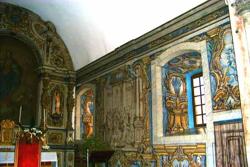|
Tourism |
| Portugal > Tourism > Algarve > Portimão |
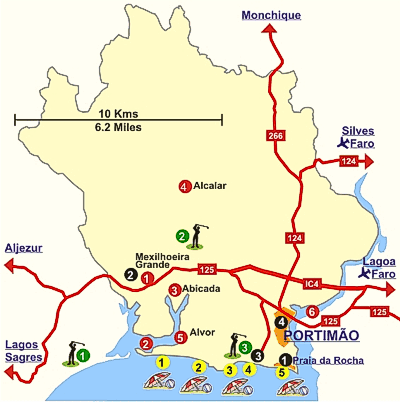
|
|
First the blue sea and its gentle lapping waves. Then fine golden sands framed by cliffs and rocks. The cosmopolitan atmosphere of an international tourist destination. This is the Algarve of beach holidays in the sun. Portimão and its municipality have more to offer
though. A rich heritage of historical monuments. The eternal natural
beauty of the Ria de Alvor. |
| Lodging |
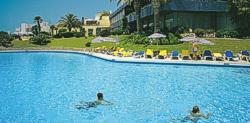 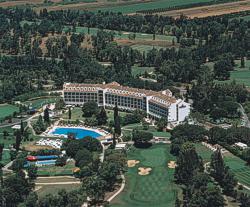 |
| Beaches |
|
|
 |
| Golf |
|
|
 |
| Big game fishing and much more |
| Portimão is one of the main big game centres in the Algarve, offering the chance to catch fighting swordfish and other big fish. there are also facilities for sailing, hind-surfing, para-sailing water-skiing and scuba diving The golf course set among the pines of Penina is internationally renowned. With courses at Alvor and Vau too, keen golfers arc spoilt for choice. |
|
 |
| Getting to know the Portimão area |
An old village, traditionally sustained by agriculture and by the resources of the Ria de Alvor Main Church - This church is in the Renaissance style (16th century) but has two side doors that are Manueline. The main doorway is extremely solemn, with a triangular pediment. The interior consists of three naves, held up by columns with ornate bases and capitals. The triumphal arch is decorated with motifs from the world of nature and a coat of arms. There is a panel depicting the Assumption on the high altar. The Capela do Santíssimo (Chapel of the Most Holy), boasts a high relief showing the figure of tire Eternal Father and a low relief of St. Peter and St. Paul. There is a collection of statues and objects used in religious ceremonies |
To one side the sea, to the other the liquid mirror of the vast estuary stretching inland, and between them a long, broad dune. This beautiful setting is the chosen nesting place of dozens of species of migratory bird. The salt marshes also support an interesting variety of animal life, while the local fishermen still use traditional techniques to catch fish and gather shellfish. To explore this almost unknown facet of the Algarve by the diffuse light of dawn is to discover a world of total calm and make memories that will last forever. (Boats can be hired at Alvor). |

| João II, who died there in 1495. It shared in the prosperity of the 15th and 16th centuries, but was laid low by the earthquake of 1755. The old town was never to regain its farmer splendor. Alvor retains much of the charm of a picturesque fishing village, with streets of white houses and colorful boats which, after a day at sea, congregate around the old fishing market Main Church - Built in the 16th century, this church was rebuilt in the 18th century. The profusely decorated main doorway - one of the most beautiful in all Algarve - and the side door are in the Manueline style. The columns supporting the three naves are also part of the original structure as are the fonts and the triumphal arch of the altar. The carved retable on the high altar, with its impressive life-size statue of the lord Jesus, is |
| from a later period (18th century). There is also a fine panel depicting the Saviour. The sacristy drat adjoins the church is a former Moorish marabout's retreat, since adapted to is new role. This small, but nonetheless important church also contains polychrome tiles with two 18th century figurative panels - the Washing of the Feet and the last Supper - several statues and a number of tombs. From the churchyard there is an excellent view of the Ria de Alvor, the town and the encircling sea Castle - The castle has long disappeared but for two stretches of wall that were once part of the fortress and now lave houses built against them. Marabout Chapels of São João and São Pedro (St. John and St. Peter) - Cubic structures with spherical cupolas that testify to the Moorish influence, these chapels evoke the holy places where Moslems would bury the religious ascetics known as marabouts. |
|
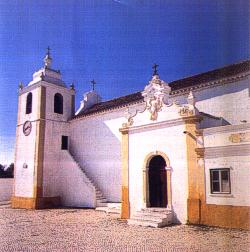 |
For thousands of years, Phoenicians, Greeks, Carthaginians, Romans, Moors, Normans and Crusaders sailed up the river towards the city of Silves, intent on trade or conquest. Visitors today can take the same course in a boat hired from Portimão. The shady groves along the banks make good places to stop off and relax, as does the island of Nossa Senhora do Rosário (Our Lady of the Rosary), where tge ruins of an old chapel are still to be seen. |
|
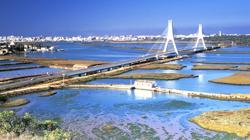 |
| Portugal > Tourism > Algarve > Portimão |
|
Portimão |

